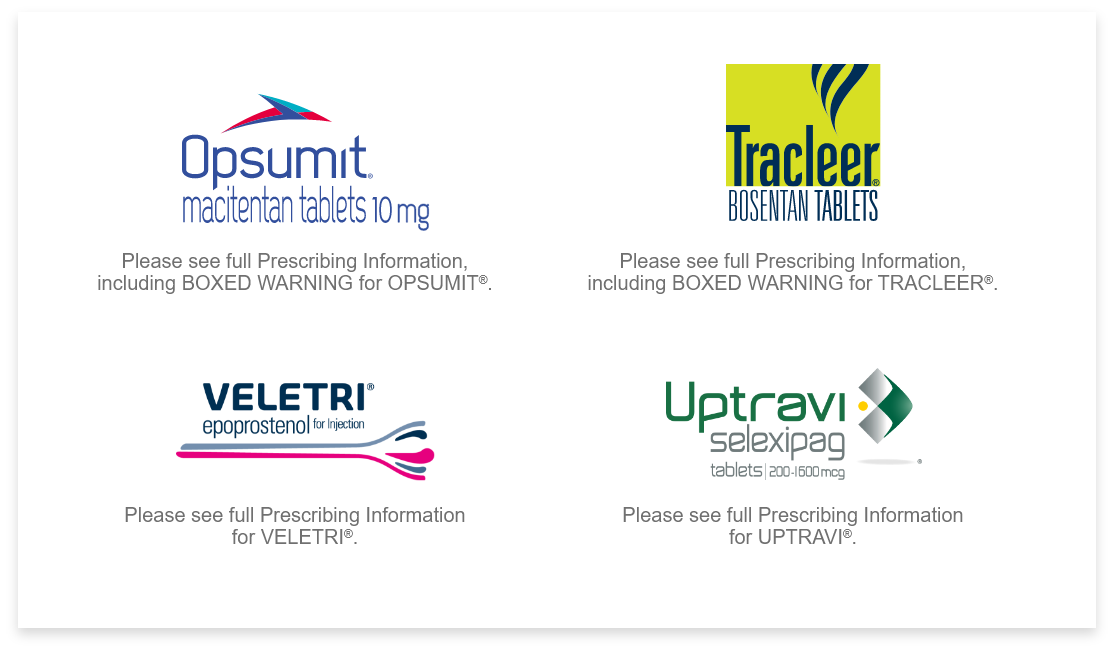Cleaning the I-neb AAD System |

Once-a-day cleaning helps reduce the time from setup to cleanup
Convenient carrying cases help patients organize their treatments so they only clean once a day
- 6 medication chamber lids with mesh, provided at no additional cost to patients
- Distilled water protects the used mesh until the patients' end-of-day cleaning
- Carrying cases enable patients to take VENTAVIS® (iloprost) Inhalation Solution at home, work, or on the road
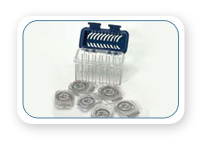 |
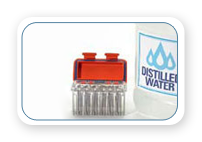 |
| Blue: carrying case for clean chamber lids with mesh | Orange: carrying case for used chamber lids with mesh |
Making VENTAVIS part of the daily routine
Instructions for patients on daily cleaning of their I-neb medication chamber
Starting the day
 |
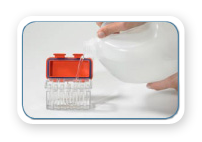 |
Load blue case with clean, dry chamber lids with mesh. |
Fill orange case with distilled water and close the lid. |
Taking VENTAVIS
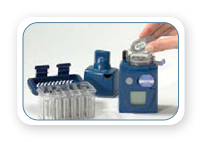 |
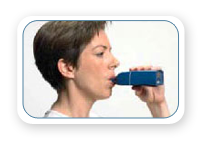 |
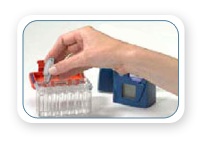 |
After VENTAVIS is placed into the I-neb Adaptive Aerosol Delivery (AAD) System medication chamber, remove a clean, dry chamber lid with mesh from the blue case. Place the chamber lid on top of the medication chamber, close the latch, and attach the mouthpiece. |
Take the VENTAVIS treatment. |
Remove the used chamber lid from on top of the medication chamber and place it in the orange case filled with distilled water. |
Once-a-day cleaning
 |
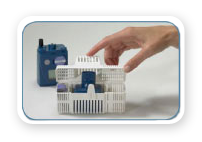 |
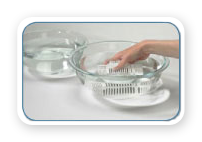 |
At the end of the day, remove the day's used chamber lids from the orange carrying case and place them in the mesh wash basket. |
Place mouthpiece, medication chamber, and drug guide in main wash basket. |
Using only one drop of dishwashing liquid without bleach, fragrances, or antibacterial ingredients, wash in distilled water. Rinse in distilled water. Air dry for 2 hours before using again. |
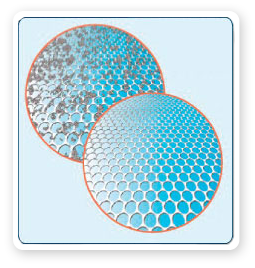
Why cleaning with distilled water is important
Each chamber lid with mesh has over 5000 tiny holes. Tap water contains minerals that can build up and collect on the mesh over time. If these holes are blocked, the I-neb AAD will not work as it should and your patients' treatments may take longer. That's why it's so important that your patients ONLY use distilled water for their daily cleaning and weekly boil. Keeping the mesh clear of minerals can help them get the most of their VENTAVIS treatments.
INDICATION
VENTAVIS® (iloprost) Inhalation Solution is indicated for the treatment of pulmonary arterial hypertension (PAH) (WHO Group 1) to improve a composite endpoint consisting of exercise tolerance, symptoms (NYHA Class), and lack of deterioration. Studies establishing effectiveness included predominantly patients with NYHA Functional Class III-IV symptoms and etiologies of idiopathic or heritable PAH (65%) or PAH associated with connective tissue disease (23%).
IMPORTANT SAFETY INFORMATION
WARNINGS AND PRECAUTIONS
Risk of Syncope
- Vital signs should be monitored while initiating VENTAVIS. Hypotension leading to syncope has been observed; VENTAVIS should therefore not be initiated in patients with systolic blood pressure less than 85 mmHg.
Pulmonary Venous Hypertension
- Stop VENTAVIS immediately if signs of pulmonary edema occur; this may be a sign of pulmonary venous hypertension.
Bronchospasm
- VENTAVIS inhalation may cause bronchospasm and patients with a history of hyperreactive airway disease may be more sensitive.
ADVERSE REACTIONS
Serious Adverse Events
- Serious adverse events reported include congestive heart failure, chest pain, supraventricular tachycardia, dyspnea, peripheral edema, and kidney failure.
Adverse Events
- Adverse events reported in a Phase 3 clinical trial occurring with a ≥3% difference between VENTAVIS patients and placebo patients were vasodilation (flushing) (27% vs 9%), increased cough (39% vs 26%), headache (30% vs 20%), trismus (12% vs 3%), insomnia (8% vs 2%), nausea (13% vs 8%), hypotension (11% vs 6%), vomiting (7% vs 2%), alkaline phosphatase increased (6% vs 1%), flu syndrome (14% vs 10%), back pain (7% vs 3%), tongue pain (4% vs 0%), palpitations (7% vs 4%), syncope (8% vs 5%), GGT increased (6% vs 3%), muscle cramps (6% vs 3%), hemoptysis (5% vs 2%), and pneumonia (4% vs 1%).
DRUG INTERACTIONS
Antihypertensives and Vasodilators
- VENTAVIS has the potential to increase the hypotensive effect of vasodilators and antihypertensive agents.
Anticoagulants and Platelet Inhibitors
- VENTAVIS also has the potential to increase risk of bleeding, particularly in patients maintained on anticoagulants or platelet inhibitors.
SPECIFIC POPULATIONS
Lactation
- Advise not to breastfeed during treatment with VENTAVIS.
Please see full Prescribing Information.
cp-134777v3
